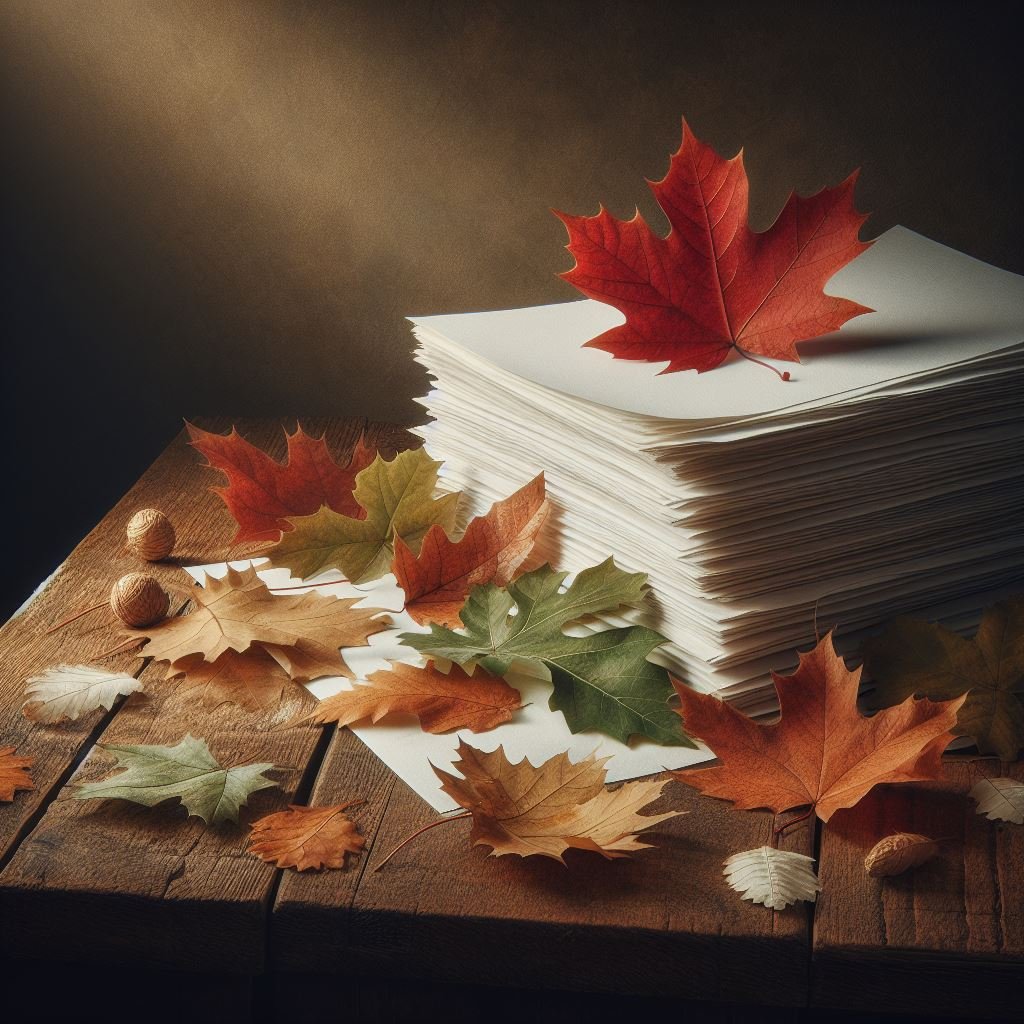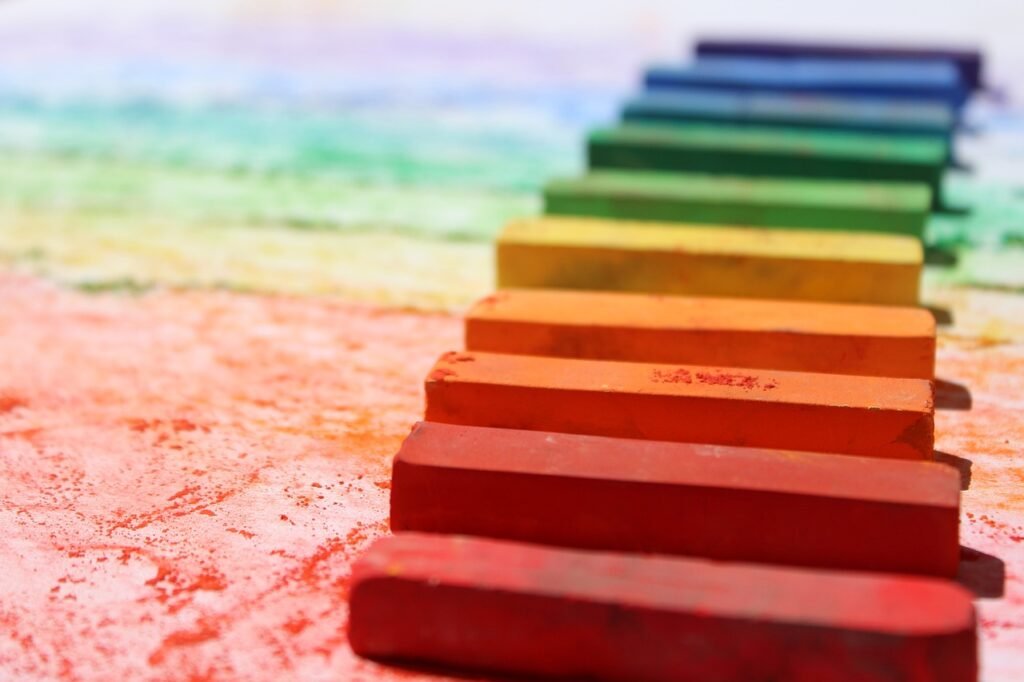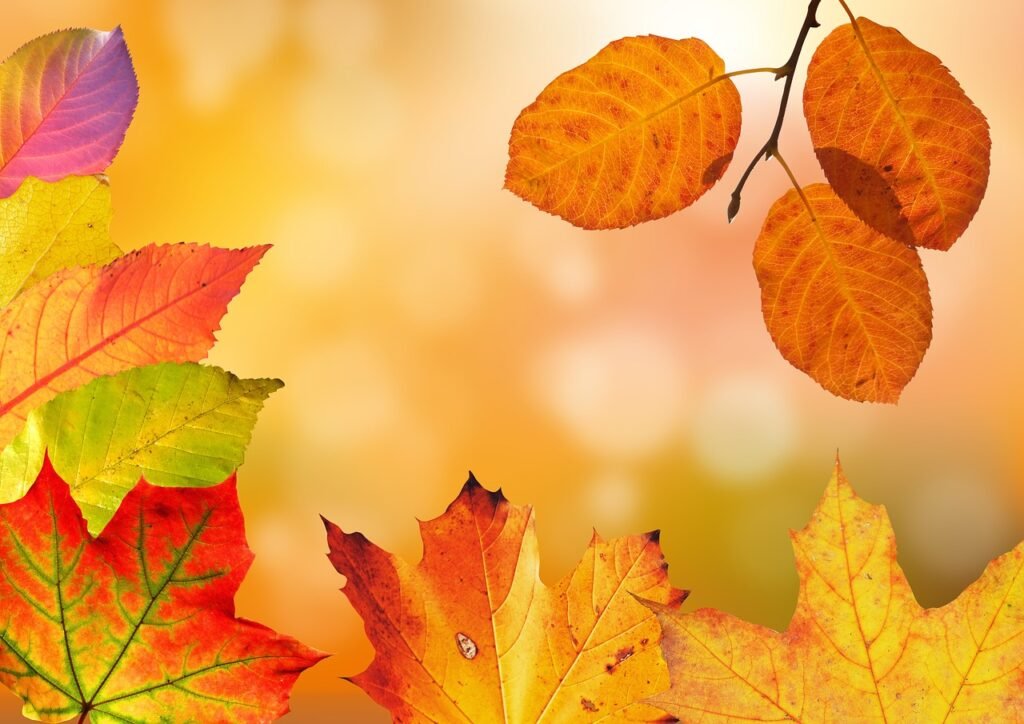
Intro
In the realm of arts and crafts, there’s a simple yet captivating hobby that not only connects you to nature but also allows your creativity to flourish. This is the art of leaf rubbing.
From kids on a rainy day activity to adults seeking a calming pastime, leaf rubbing has something for everyone.
Whether you’re a novice or a seasoned pro, this guide will introduce you to the magic of leaf rubbing, explore its variations, discuss essential supplies, help you choose the perfect leaf, and point you towards resources for further learning.
What is Leaf Rubbing?
Have you ever marveled at the intricate pattern of veins on a leaf and wondered how you could capture that beauty?
Leaf rubbing, or frottage as it’s known in the art world, does just that! This technique allows you to translate the unique texture of a leaf onto a flat surface, typically a piece of paper, using a variety of mediums such as a crayon, pastel, or charcoal. The result? An astonishing representation of the leaf’s detail and individuality.
Each leaf, with its distinct shape, size, and vein structure, tells its own story, and leaf rubbing provides an avenue to express that story artistically.
This technique might seem simplistic at first glance, but it has the potential to generate incredible, elaborate designs that reflect the essence and charm of each leaf you choose.
There’s also plenty of room to get creative and experiment within this craft. Think about it – the world is filled with an assortment of leaves, all waiting to be your next canvas.
Consider the textures, the surfaces, and the mediums you can play with.
No two leaf rubbings will ever be the same, promising a unique and diverse collection of art pieces that mirror the beauty of nature. So, why not give leaf rubbing a try and see where this artistic journey leads you?
Exploring Variations of Leaf Rubbing

While the basic technique of leaf rubbing is quite straightforward, there is a multitude of ways to modify and customize your creation process.
Think of it as having a huge playground of possibilities right at your fingertips. A slight change in your tool or the pressure you apply could result in a dramatically different and exciting outcome.
To kick things up a notch, why not try experimenting with a palette of colored pencils, pastels, or even oil pastels? They all bring their own unique flair and can transform your leaf rubbing into a riot of colors. And remember, there’s no rule stating you must stick with one color. Feel free to use multiple shades to give your artwork an added depth.
Now, let’s talk pressure. The beauty of leaf rubbing lies in its subtlety and nuances. Applying varying degrees of pressure can highlight different aspects of the leaf’s texture. Pressing down harder will showcase the leaf’s veins and rigid parts, while a gentle touch can expose the softer, intricate patterns. It’s all about finding a balance that brings out the best in your leaf.
Your choice of paper can also greatly influence the result of your leaf rubbing. Experiment with different types, such as textured paper, watercolor paper, or even thin fabric. Each material will respond differently to your rubbing tool, creating diverse effects that might just surprise you.
But why stop at a single leaf? There’s a whole world of leaves out there, each with its own unique shape and structure. Create a collage of different leaves for an intriguing composition. This not only adds variety to your work but also offers a fun way to learn about different plant species.
And of course, there’s no need to limit your leaf rubbing to being just a standalone piece of art. Consider incorporating your rubbings into a larger artwork, using them as backgrounds, or adding them to your scrapbook.
In essence, the world of leaf rubbing is full of possibilities and the only limit is your imagination. So go ahead, get your hands dirty, and start exploring these exciting variations.
Essential Supplies You’ll Need

Embarking on your leaf rubbing journey is easier than you might think, especially when it comes to gathering your supplies. The beauty of this craft lies in its simplicity; you don’t need a vast or costly array of tools to start creating beautiful leaf art. So, what do you need to bring your leaf rubbing visions to life?
First, embark on a leaf hunt. As mentioned earlier, leaves with prominent veins and unique shapes often give the best results. It’s like going on a treasure hunt – scour your backyard, local park, or nature trail for leaves that catch your eye.
Next, you’ll need something to rub with. This can be as basic as a regular pencil or a simple crayon. Charcoal also works well and adds a bit of an artistic touch to your creations.
If you’re looking to add a splash of color to your artwork, consider having a set of colored pencils or pastels on hand. Remember, each medium will interact differently with the leaf’s texture, offering a unique outcome every time.
As for your canvas, opt for a medium-weight paper that can withstand the pressure of rubbing without tearing. Construction paper, card stock, or even watercolor paper are great choices.
Experimenting with different paper types can also lead to interesting results, as each type will react differently to the rubbing process.
Finally, having a flat and firm surface, such as a clipboard, can come in handy. It keeps your paper steady and provides a solid base for your leaf rubbing. This can be especially useful if you’re out in nature and don’t have a flat table or desk readily available.
So, there you have it – your leaf rubbing toolkit. As you can see, it doesn’t take much to get started. Leaf rubbing truly is a craft that is accessible to anyone and everyone, regardless of artistic ability or budget. So why wait? Gather your supplies, find your perfect leaf, and let the creativity begin.
How to Choose the Perfect Leaf

So, you’re all geared up and ready to embark on your leaf rubbing journey, but now comes the crucial question: how do you select the perfect leaf? The answer might be simpler than you think!
Although you can potentially create a leaf rubbing from any leaf you encounter, some leaves naturally lend themselves to more striking and detailed art pieces.
To begin with, you’ll want to keep an eye out for leaves with clearly visible veins and an intriguing shape. Why so? These characteristics are what will get transferred onto your paper during the rubbing process. The more pronounced the veins and the more interesting the shape, the more dynamic and visually appealing your leaf rubbing will be.
Broad-leaved trees are your best bet when it comes to leaf selection. Maple, oak, and poplar leaves, for example, are particularly suitable due to their large size, distinctive shape, and complex vein structures.
Don’t be afraid to choose leaves of various sizes and shapes, though. This diversity can add a fascinating dimension to your leaf rubbings, making each one a unique piece of art.
Timing also plays a vital role in the leaf selection process. Fall proves to be the ideal time to gather leaves for your leaf rubbings. This is when the leaves have dropped from the trees but haven’t completely dried out yet. A dry leaf might crumble under the pressure of rubbing, while a leaf that’s too fresh could potentially dampen your paper. A leaf that has just fallen from the tree strikes the perfect balance.
However, it’s worth noting that while you’re on your quest for the perfect leaf, it’s crucial to be mindful of nature. Collect only what you need for your artwork and always leave your surroundings as you found them.
Nature is not only the inspiration for your leaf rubbings, but it’s also the source of your raw materials. Showing respect for the environment is an integral part of the leaf rubbing process.
So go forth, let your curiosity guide you, and you’ll be sure to find leaves that will transform into incredible leaf rubbings. Remember, the journey to find the perfect leaf is just as exciting as the leaf rubbing process itself! So, relish this exploration phase and watch as it enhances your connection with nature and your artwork.
Top Resources for Learning More About Leaf Rubbing

Ready to plunge further into the vibrant world of leaf rubbing? You’re in luck! A wealth of resources awaits you, brimming with insights, tips, and inspiring ideas that can take your leaf rubbing artistry to the next level.
Online platforms can be your goldmine of knowledge. Craft communities and forums are bustling hubs where like-minded individuals share their experiences, handy tips, and fascinating creations. You can glean valuable advice, learn new techniques, and even showcase your own leaf rubbings.
For visual learners, YouTube is your go-to destination. This platform is replete with comprehensive video tutorials that walk you through the leaf rubbing process, step by step. It’s a practical and engaging way to learn, letting you see techniques in action. As you navigate through this video trove, you’ll discover countless methods, styles, and creative twists that you can experiment with in your own leaf rubbing journey.
Pinterest, another visual platform, is an expansive wellspring of inspiration. With its endless array of leaf rubbing images, you’re bound to stumble upon inventive ideas that you never even considered. It’s an ideal place to gather a collection of reference images, color schemes, and design layouts that can invigorate your creative process.
Books can also serve as invaluable guides in your leaf rubbing endeavor. A notable recommendation is Clare Walker Leslie’s “Nature Drawing: A Tool for Learning,” a comprehensive guide that offers a deep dive into nature-based art, including leaf rubbing.
However, don’t forget the richest resource of all – nature itself. Embark on exploratory walks in your local parks, gardens, and trails. These natural spaces are teeming with diverse leaf specimens that can spark your creativity and broaden your leaf repertoire. Observing leaves in their natural habitat can also deepen your understanding of their structure and textures, enriching your leaf rubbing skills.
In essence, these resources are your compass, guiding you through the exhilarating terrain of leaf rubbing. They fuel your curiosity, broaden your horizons, and empower you to create leaf rubbings that truly reflect your artistic vision.
So, go ahead, delve into these resources, and let your leaf rubbing journey unfold in a myriad of surprising and delightful ways.
